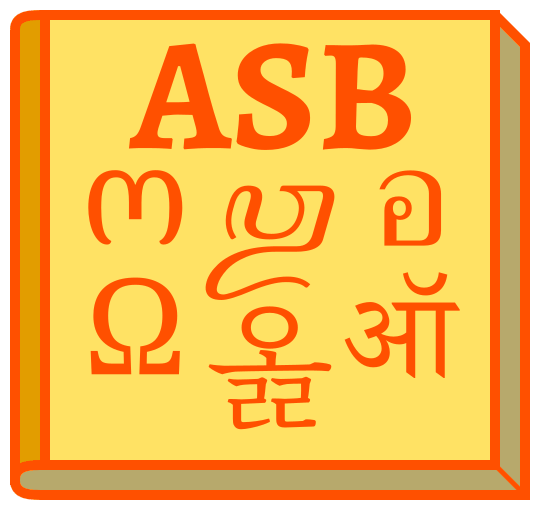Tongyang Script is an alternate alphabetic writing system for English, Chinese topolects and Vietnamese inspired by the major writing systems of East Asia.
‘Tongyang’ (pronounced ‘Toong-young’) is the Chinese and Korean pronunciation of 東洋, a Korean and Japanese term for East Asia.
A few years back, I wondered if it was possible to make a phonemic alphabet for English that was based on the principles of Chinese calligraphy, since there were none I had heard of. You know, the Eight Principles of Yong and all that. After starting off as a weird-looking mishmash of Japanese katakana and fragments of Chinese hanzi arranged in Hangul-style syllable blocks, I made gradual improvements over time to make it easier to write, more aesthetically pleasing and more capable of representing complex syllable structures in an elegant way. Tongyang script was the end result, and I’m pretty glad with how it turned out in the end.
In Tongyang Script, letters are arranged within a single square frame in a similar manner to Korean Hangul. Core letters were derived from selected portions of hanzi characters containing the desired sound – the rest of the letters were based on simple modifications of a core letter representing a closely related sound. Simple letterforms consisting of 2 or 3 strokes were chosen, where possible. Unlike some of the other syllable block scripts out there, each letter has been carefully selected to be able to form syllable blocks with the calligraphically balanced look of Chinese characters.
As an Asian, I like to imagine this as a writing system for the East Asian diaspora, an artform by which one can express Asian identity.
Syllable structure
Syllable blocks are composed of consonant and vowel letters arranged in a specific way – consonants at the beginning of a syllable are positioned in the top left, vowels in the top right, and (if present) consonants at the end of a syllable are positioned at the bottom. If present, the medial letterforms are written between/above the vowels and initial consonants.
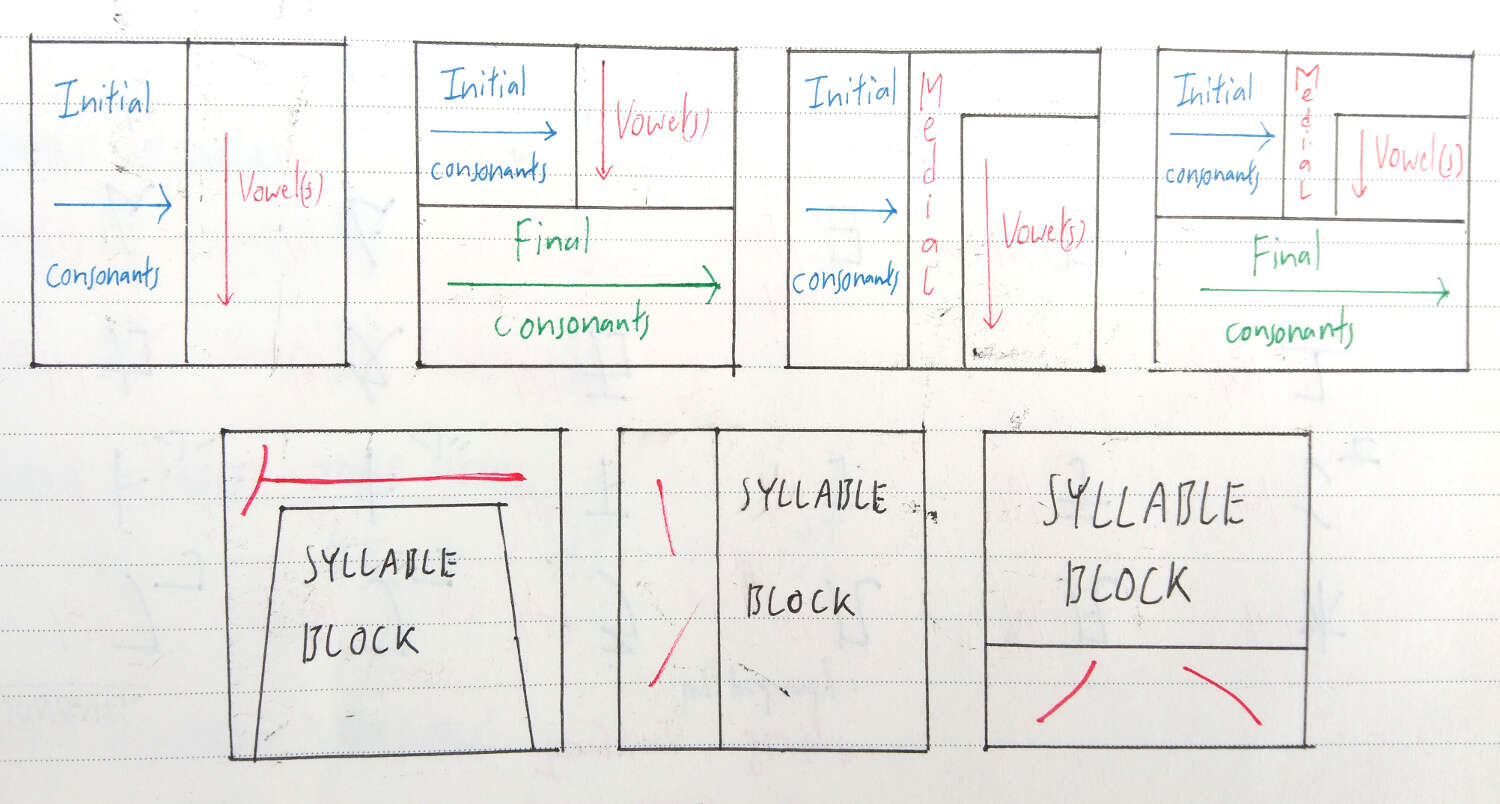
Consonant clusters are written from left to right.
- Up to 3 initial consonants and 4 final consonants can be clustered together.
- Up to 2 vowels can be stacked on top of each other, although the provided diphthong letters should be used instead where available.
- This is represented in linguistics notation as
(C1)(C2)(C3) + (H)V1(V2) + (C4)(C5)(C6)(C7).
Key
These are all the letters, numerals and punctuation marks used in Tongyang Script.
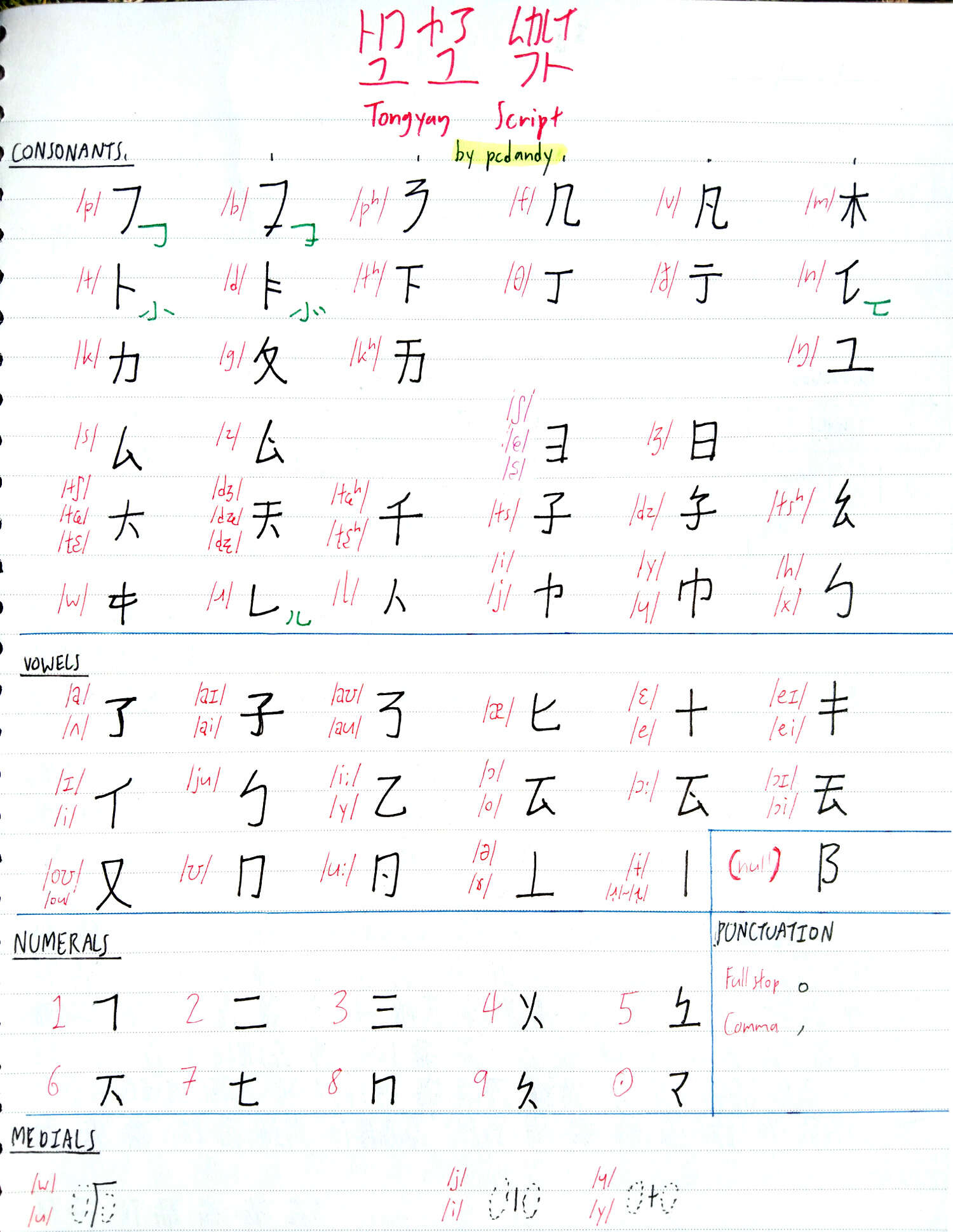
Things to note:
- Some consonant letters have an alternate form when it is the only final consonant – these are shown in green to the bottom right of those consonants. E.g. /ta/ =
 and /tat/ =
and /tat/ =  . These do not apply when another final consonant is present: /tats/ =
. These do not apply when another final consonant is present: /tats/ =  .
. - When no consonant begins a syllable, the placeholder letter ⻖ is written in its place: /a/ =
 . In quick handwriting, this can be further reduced into ƿ:
. In quick handwriting, this can be further reduced into ƿ:  .
. - When a letter has 2 or more pronunciations, the English pronunciation is provided above the Chinese pronunciation.
- Mandarin ‘zh’~’j’, ‘ch’~’q’, and ‘sh’~’x’ are written using the same letters, since ‘j’, ‘q’ and ‘x’ only occur before the ‘i’ and ‘ü’ vowels. E.g. ‘zha’ /ʈʂa/ =
 , ‘ji’ /tɕi/ =
, ‘ji’ /tɕi/ =  .
. - The /ts/ and /dz/ letters are only used for writing Chinese. To write /ts/ at the end of an English syllable (e.g. ‘cats’), write the /t/ and /s/ letters together instead. Aspirated consonant letters are only used for Chinese likewise.
Notes on the rest:
- Numerals are based on simplified versions of hanzi and Suzhou numerals.
- The full stop is replaced with a small circle, as in Chinese and Japanese.
Tone markers
Tongyang Script comes with 3 tone markers.

The level tone (1) is unmarked. Rising (2), dipping (3) and falling (4) tones are marked with special components, whose positions correspond to the overall direction of the tone pitch: 𠂉 on top, 冫 on the side and 八 at the bottom respectively.
Sample syllables
Here are some sample syllables in Tongyang, including the alternate final forms of the /p/, /b/, /t/, /d/, /n/, and /ɹ/ consonants and how the tonal components are written with the syllable /ma/.
2 special ligature forms are provided:
- /tsai/ (‘zai’ in Pinyin) – the middle horizontal strokes of /ts/ and /ai/ are joined together.
- /-ɥe/ (‘-üe’ in Pinyin) – the middle horizontal strokes of /ɥ/ and /e/ are joined together.
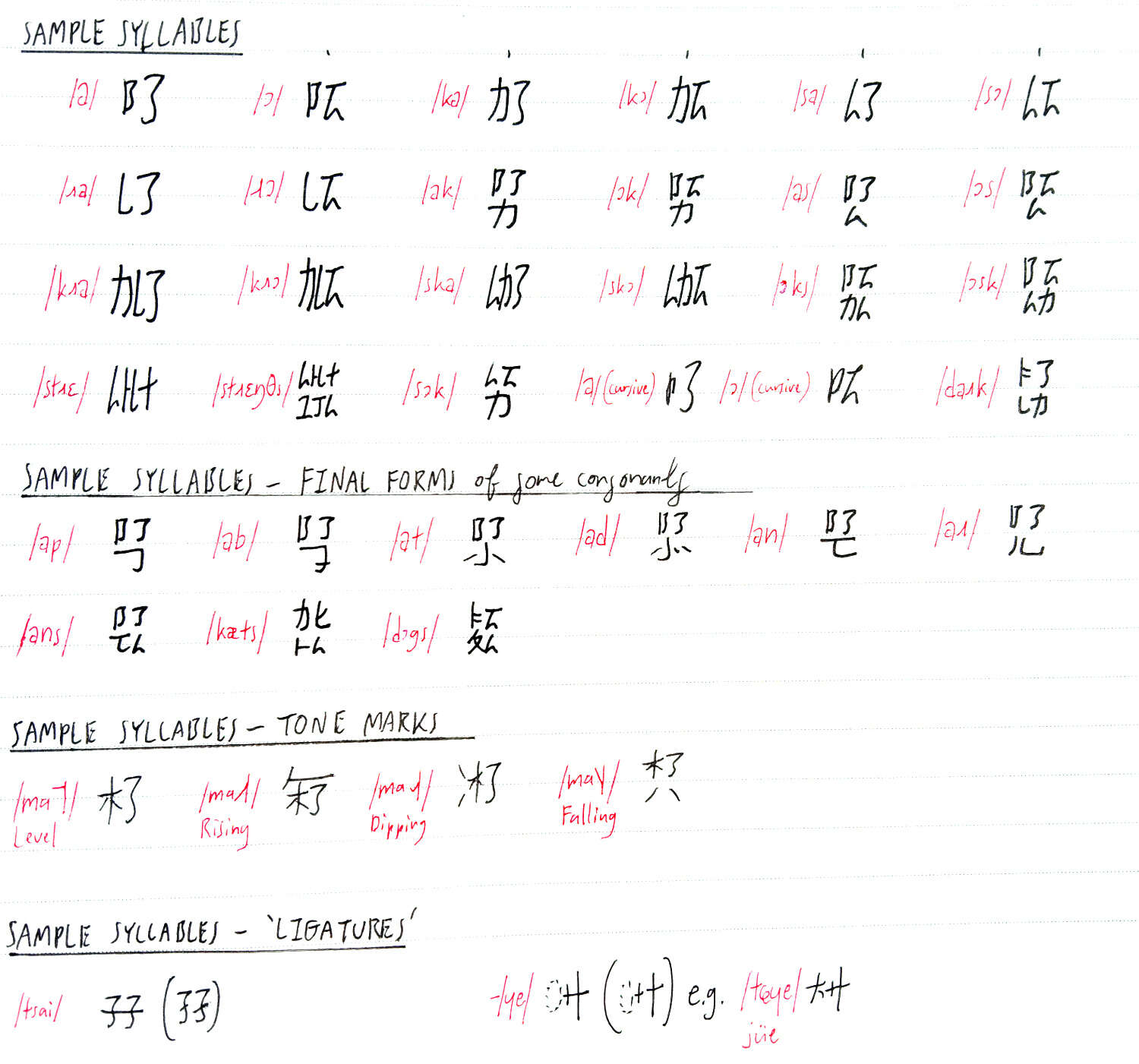
These samples show the use of medial letterforms and tonal components with a more complex syllable (‘juan’ in Pinyin).
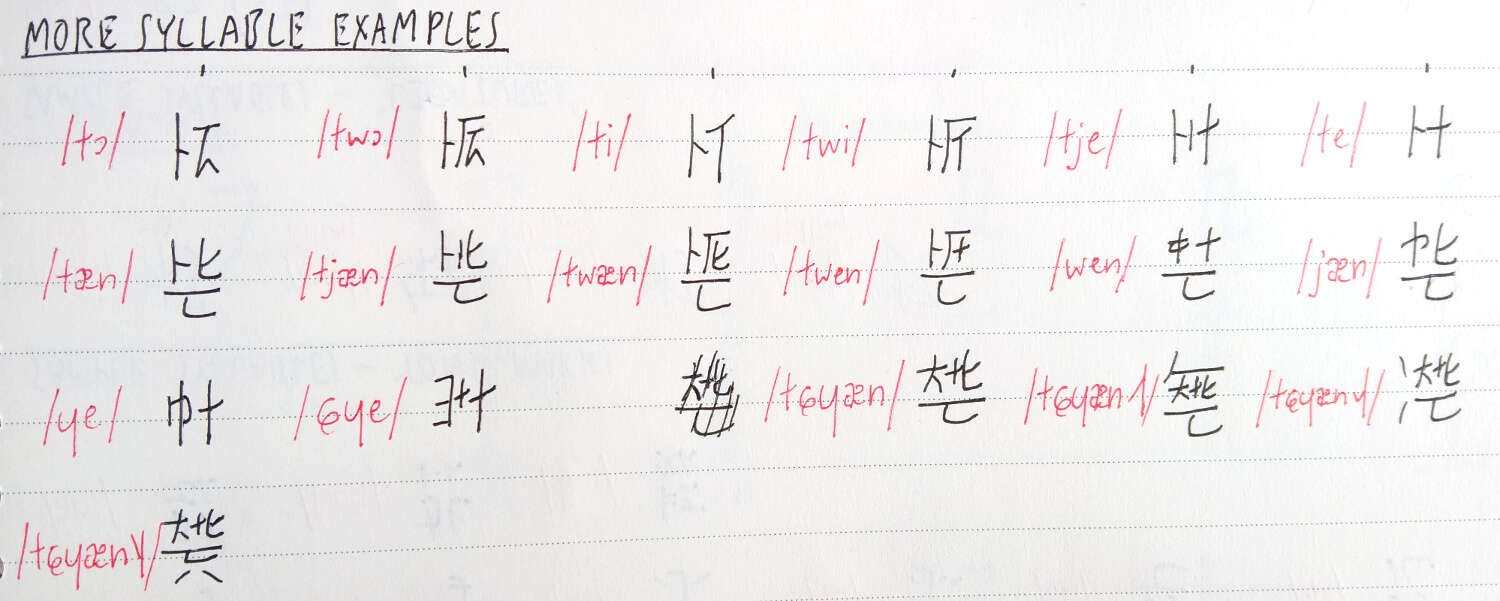
Orthography
The English version of Tongyang Script allows morphemes to be separated into their own characters in a similar way to Korean Hangul orthography – for instance, ‘thinking’ would be written as ‘think + ing’ and ‘visualisation’ as ‘visual + ise + -ation’.

Cantonese, Hakka, Hokkien support
Tongyang Script has full support for Cantonese, Hakka and Hokkien Chinese using additional letters and tone markers. The extra letters, tone marker arrangements used for writing each topolect and equivalent romanisations are provided below. (Jyutping romanisation is used for Cantonese and Tâi-lô for Hokkien.)
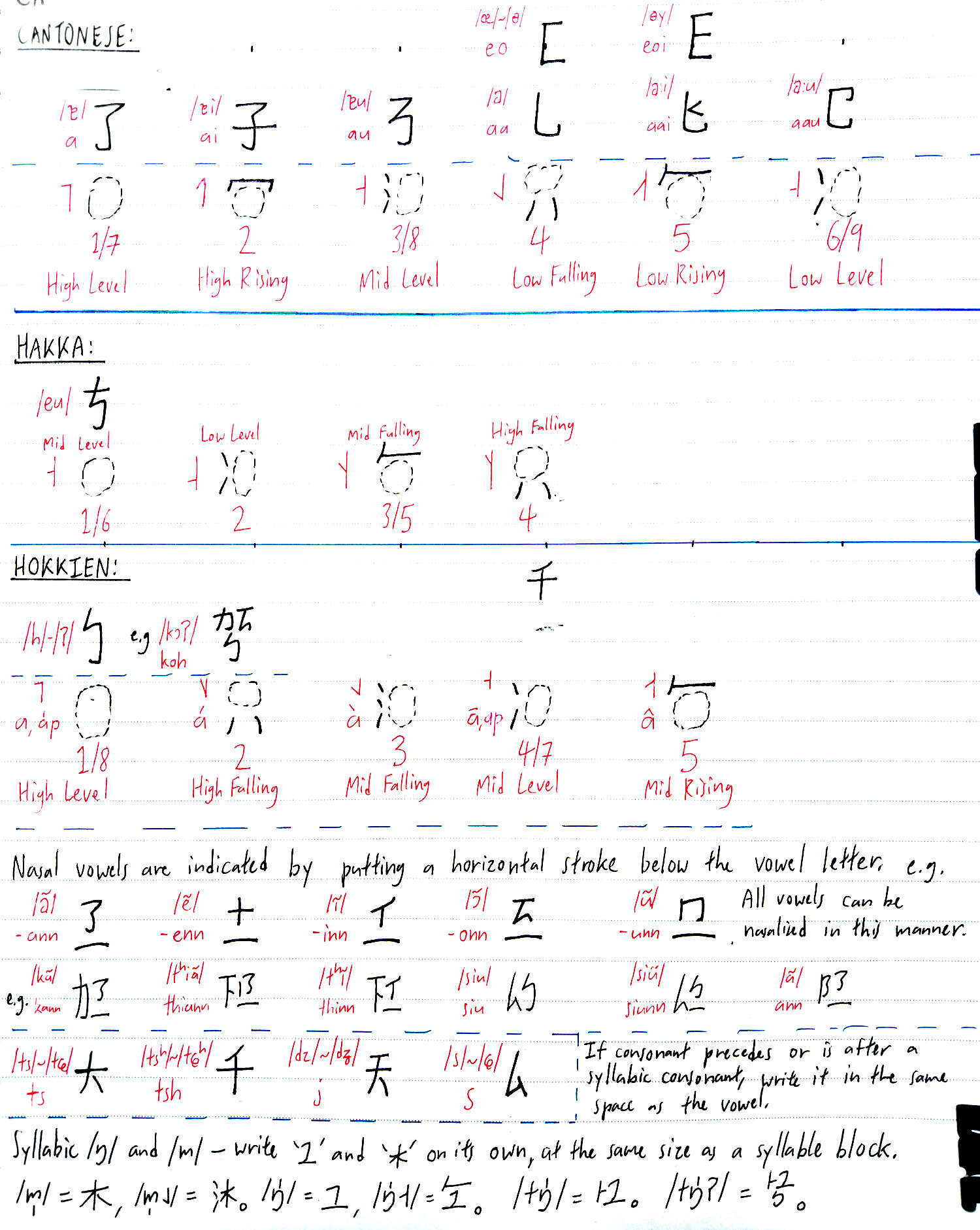
Notes:
- Common romanisations for Cantonese, Hakka and Hokkien distinguish tones that only occur in syllables ending in /p/, /t/, /k/ or /ʔ/. All of these ‘entering tones’ have an equivalent tone that only occurs in other syllables not ending in /p/, /t/, /k/ or /ʔ/, which is why they are considered variations of the same tone (e.g. tone 1 = tone 7 in Cantonese, tone 1 = tone 6 in Hakka, tone 1 = tone 8 in Hokkien).
- To indicate nasal vowels, a horizontal stroke is placed below the vowel in the same way as the hanzi 旦, pronounced with a nasal vowel /tuã/ in Hokkien.
- In these topolects, /ts/, /tsʰ/, and /dz/ are written with the 大, 千 and 天 letters respectively.
- Syllabic consonants are indicated by writing the consonant letter as a standalone character with the same size as syllable block characters. If other consonants come before or after the syllabic consonant, write the syllabic consonant in the same space as the vowel letter and adjust accordingly.
Vietnamese support
With a bit of effort, Tongyang can also be used to write Vietnamese. These are the medial forms, vowels, diphthongs + glides, consonants with unintuitive spellings and tone marker arrangements used for Vietnamese, along with the equivalent Quốc ngữ spellings for comparison:
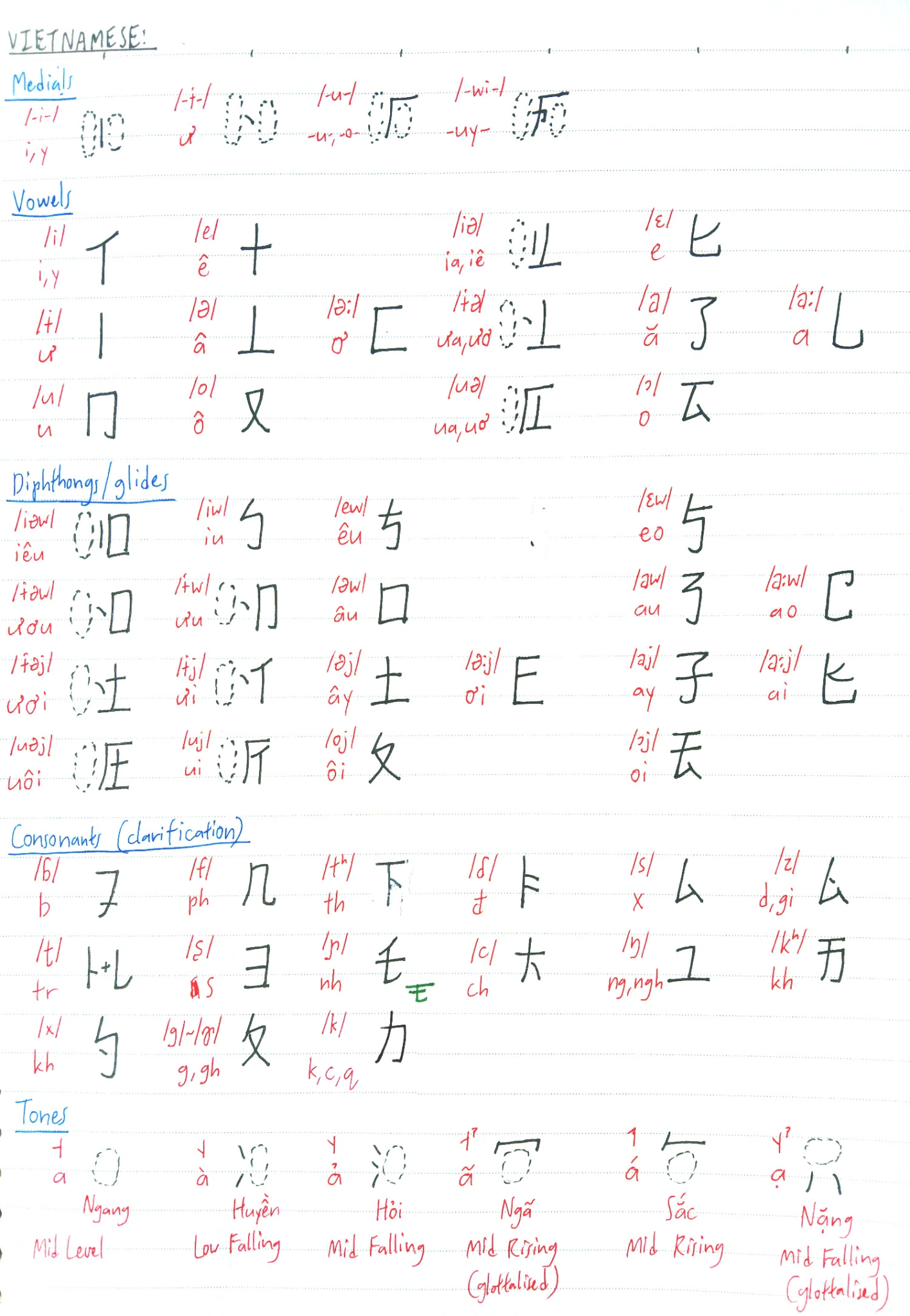
Anyway, wIthout further ado, let’s see how Tongyang Script actually looks like in practice!
Sample texts (English)
Universal Declaration of Human Rights

Excerpt from a short story I wrote a while ago
For comparison, you can view the original one here.
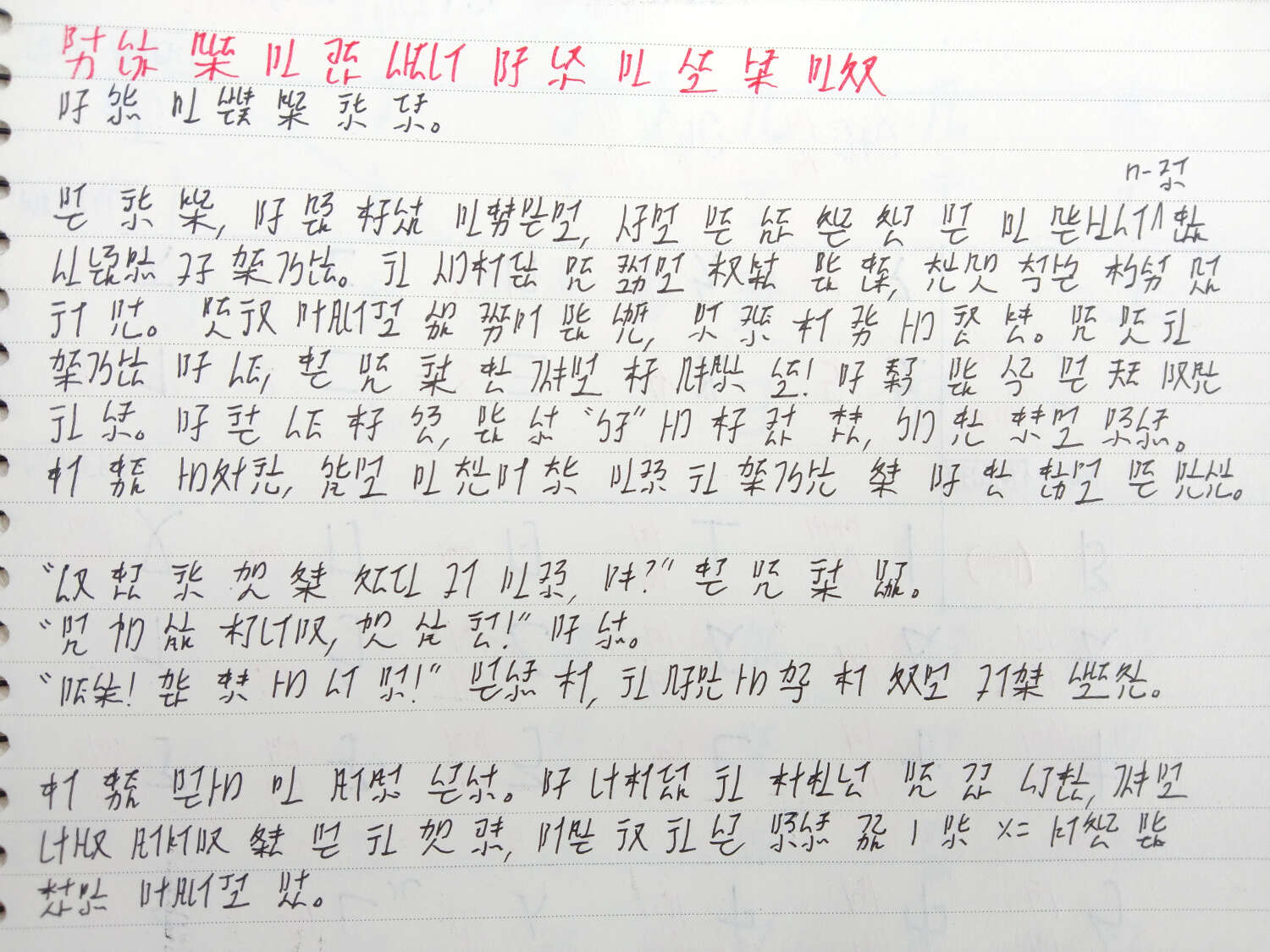
First section of an ABC News Australia article
Note: this text sample uses 千 instead of 大 to write /tʃ/. This was a mistake – 千 was the original letter for /tʃ/ in older versions of Tongyang Script.
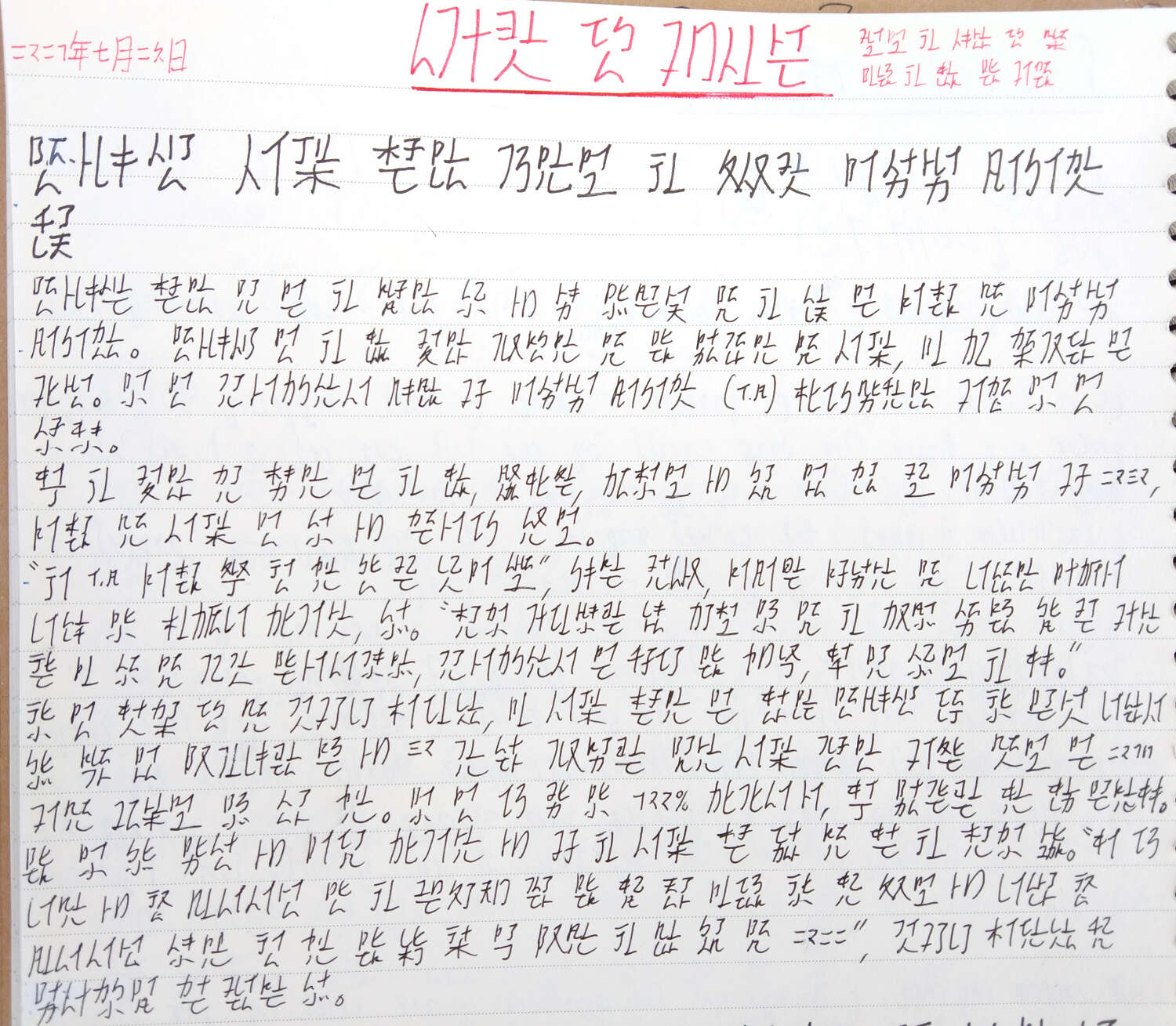
Sample texts (Mandarin Chinese)
Universal Declaration of Human Rights
Rénrén shēng ér zìyóu, zài zūnyán hé quánlì shàng yīlù píngděng. Tāmen fùyǒu lǐxìng hé liángxīn, bìng yīng yǐ xiōngdì guānxì de jīngshén hùxiāng duìdài.

Chinese poem from the Tang Dynasty – Jing Ye Si (Quiet Night Thoughts) by Li Bai
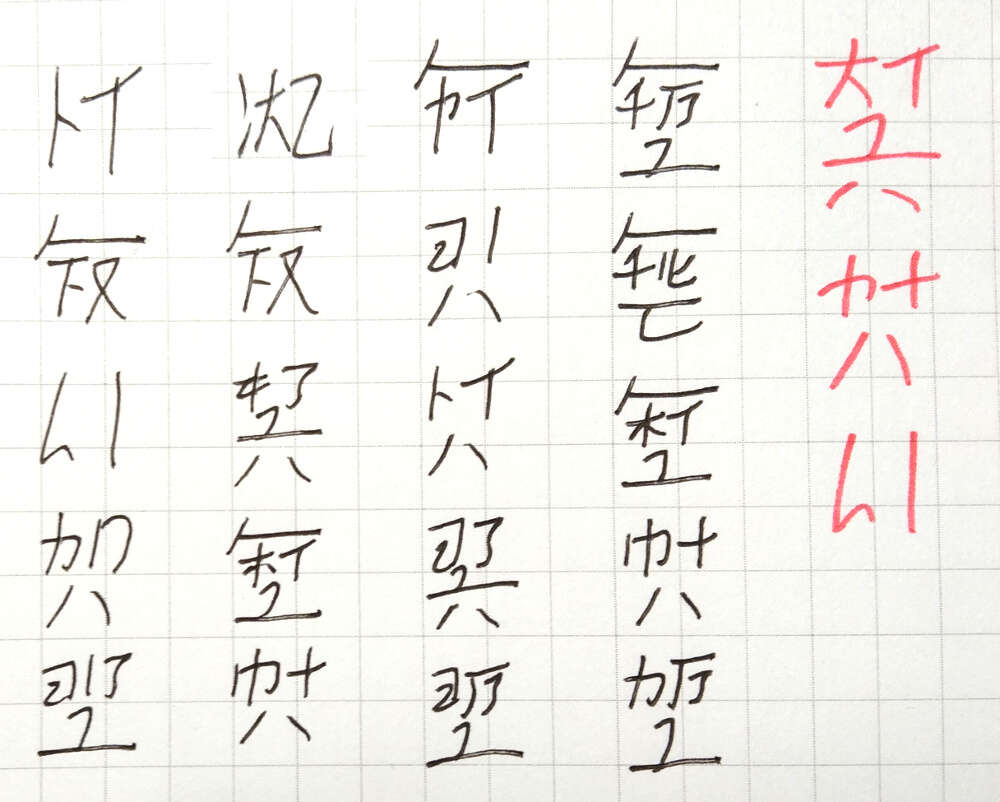
Very popular Mandopop song from 2017 – Wo Men Bu Yi Yang (We Are Different) by Da Zhuang (video)
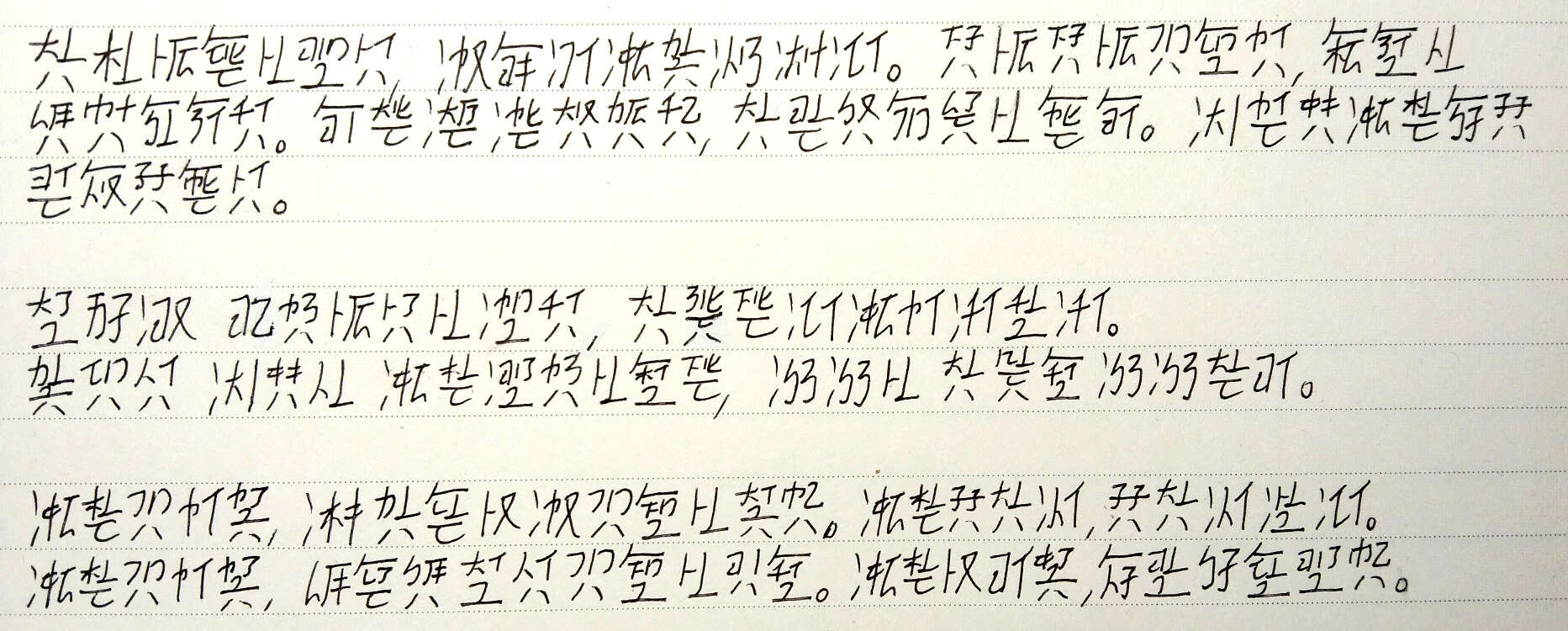
Sample texts (Cantonese)
Universal Declaration of Human Rights
Jan⁴jan⁴ saang¹ceot¹lai⁴ zau⁶hai⁶ zi⁶jau⁴ ge³, hai² zyun¹jim⁴ tung⁴ kyun⁴lei⁵ soeng⁶ jat¹leot⁶ ping⁴dang². Keoi⁵dei⁶ geoi⁶jau⁵ lei⁵sing³ tung⁴ loeng⁴sam¹, ji⁴ce³ jing¹goi¹ jung⁶ hing¹dai⁶gaan¹ ge³ gwaan¹hai⁶ lai⁶ wu⁶soeng¹ deoi³doi⁶.

Famous Cantonese song – Soeng⁶ Hoi² Taan¹ (Shanghai Beach) by Frances Yip (video)

Sample texts (Hakka)
Some random phrases
Unlike Mandarin, Cantonese and Hokkien, Hakka phonetic texts are not as common, so these phrases will do for now.
sin1 ngien2 kuai5 lok6 – giung1 hi3 fat5 coi2 – ho3 kiu3 mo kien5 ngi2
on1 go1 hin1 gien5 do5 ngi2 – ngi2 oi5 m1 oi5 tung2 ngai2 tiau5 vu3 mo?

Sample texts (Hokkien)
Universal Declaration of Human Rights
Lâng-kai sing jî tsū-iû, tsāi tsun-giâm ki̍p khuân-lī siōng koh pîng-tíng. Lâng koh hù-iú lí-sìng liông-ti, sîng-ìng huê bo̍k sann tshù, tsîng tông tshiú tsiok.

Famous Hokkien song – Tsi̍t-ki sió hōo-suànn (A Little Umbrella) by Chris Hung (video)
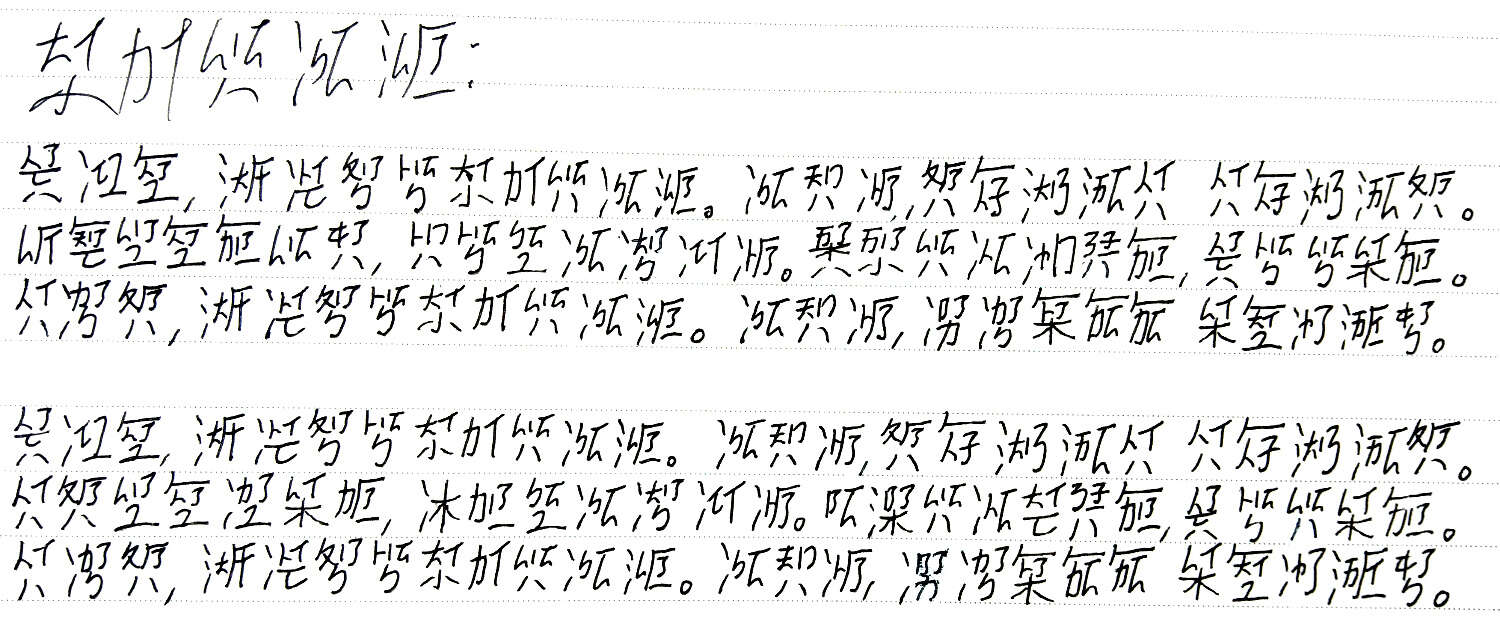
Sample texts (Vietnamese)
Universal Declaration of Human Rights
Tất cả mọi người sinh ra đều được tự do và bình đẳng về nhân phẩm và quyền lợi. Mọi con người đều được tạo hóa ban cho lý trí và lương tâm và cần phải đối xử với nhau trong tình anh em.

